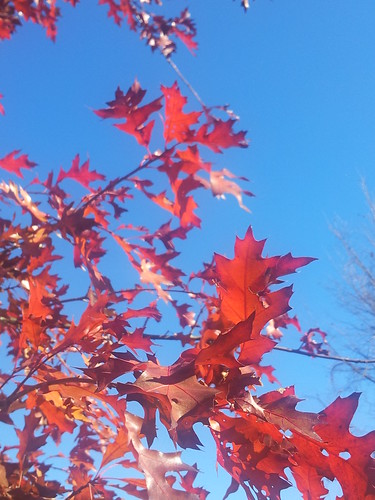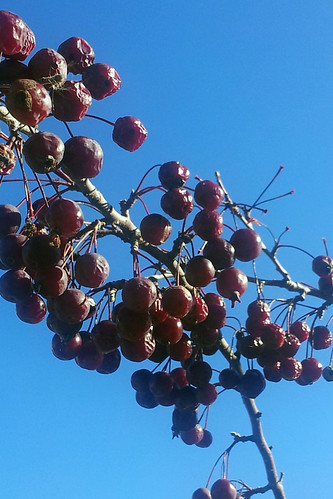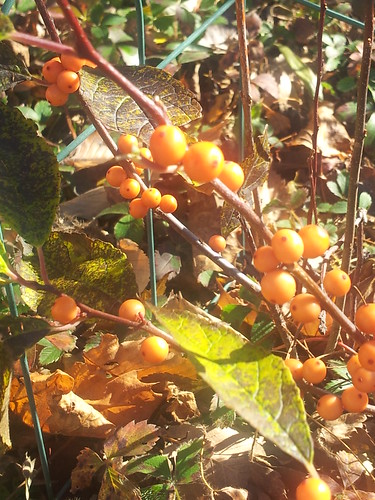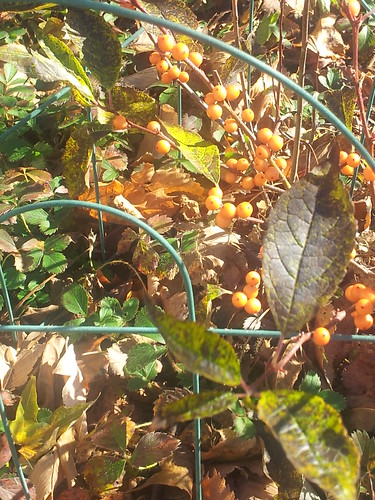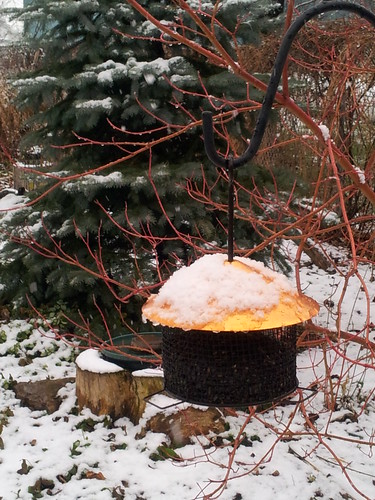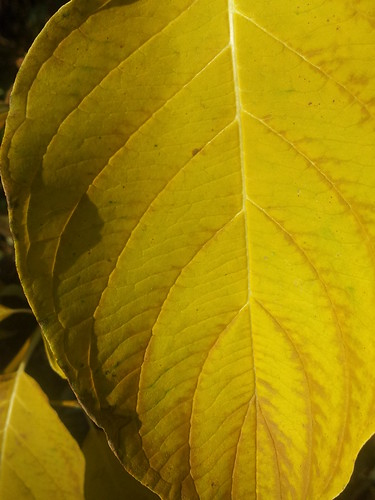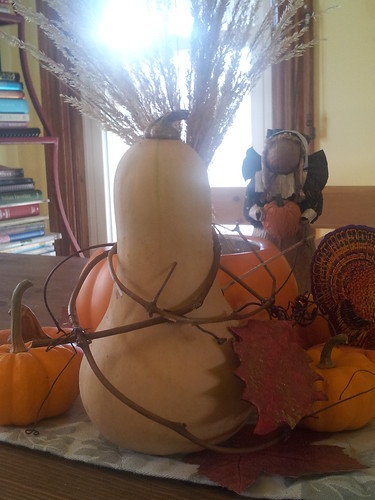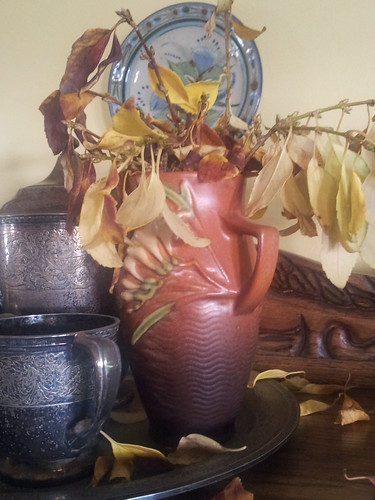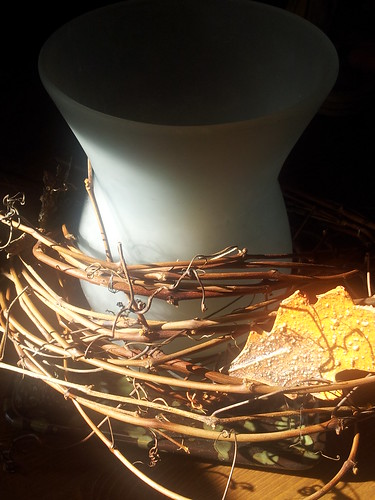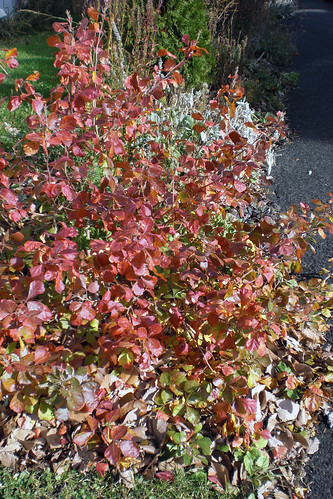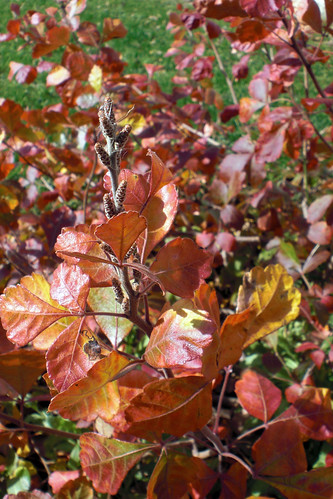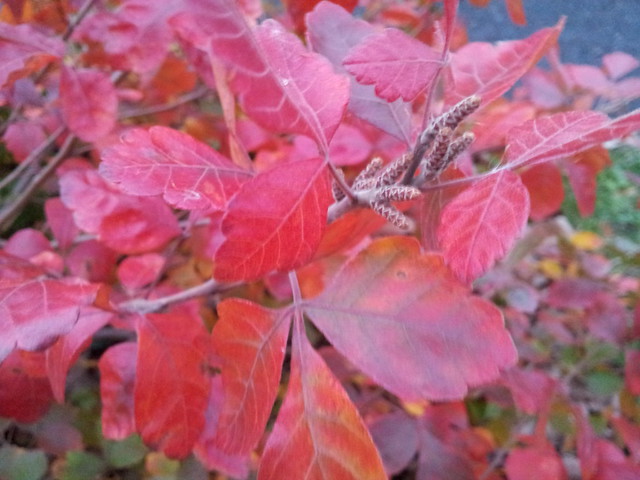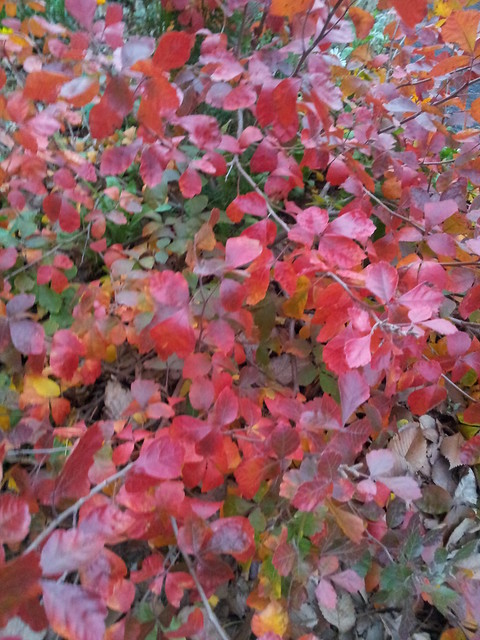Wonderful, warm November - doesn't that sound odd? But it has been, was. This morning it is 12° F. The first few snowflakes swirled in our sky on November 24. By November 28 the ground is white. I found it unusual to see a Red-winged Blackbird at my feeder. They usually leave for warmer climates by now. Each year I try to record when I think they have finally migrated:
2009: Last Red-winged Blackbird sighting recorded on November 2
2010: Last Red-winged Blackbird sighting recorded on November 11
2011: Not recorded, but last Grackle sighting recorded on November 7 - the Redwings are usually not far behind
2012: Last Red-winged Blackbird sighting recorded on November 28
The first to leave are males in their prime followed by their ladies. The last to leave are usually the young males not quite matured into their full black feathers. Young males are what I have been seeing at the feeders this month.
November is typically described as drab, grey but this Fall it has been anything but.
The red Winterberries were eaten before I had a chance to photograph them! This year I've fenced in my young shrubs foregoing the chicken wire wrap. I read somewhere, and apologize for not remembering the source, that rabbits don't like to feel fenced in and a simple gate around your shrubs will deter them from dining. We'll find out if it works.
Again, Garden Bloggers Bloom Day has snuck past me. Aside from berries and a few fading blooms of Coral Honeysuckle and Scabiosa, not much blooms for me in November with the exception of this surprise Daisy.
And so "dull, grey" November fades into gleeful, glitzy December. I am thankful to take in its natural beauty before it goes.
Bye bye blackbird. I look forward to your return in Spring.
2009: Last Red-winged Blackbird sighting recorded on November 2
2010: Last Red-winged Blackbird sighting recorded on November 11
2011: Not recorded, but last Grackle sighting recorded on November 7 - the Redwings are usually not far behind
2012: Last Red-winged Blackbird sighting recorded on November 28
The first to leave are males in their prime followed by their ladies. The last to leave are usually the young males not quite matured into their full black feathers. Young males are what I have been seeing at the feeders this month.
November is typically described as drab, grey but this Fall it has been anything but.
The red Winterberries were eaten before I had a chance to photograph them! This year I've fenced in my young shrubs foregoing the chicken wire wrap. I read somewhere, and apologize for not remembering the source, that rabbits don't like to feel fenced in and a simple gate around your shrubs will deter them from dining. We'll find out if it works.
Again, Garden Bloggers Bloom Day has snuck past me. Aside from berries and a few fading blooms of Coral Honeysuckle and Scabiosa, not much blooms for me in November with the exception of this surprise Daisy.
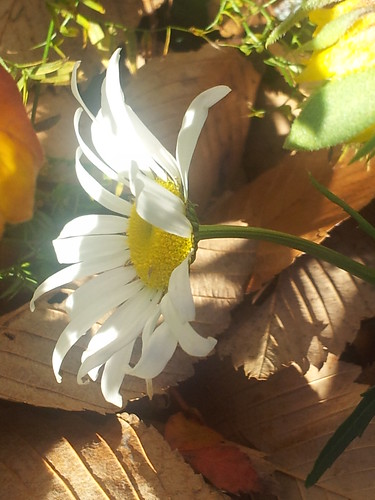 |
| Surprise Daisy bloom |
And so "dull, grey" November fades into gleeful, glitzy December. I am thankful to take in its natural beauty before it goes.
Bye bye blackbird. I look forward to your return in Spring.

